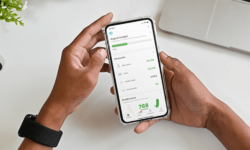How to Get Mortgage Pre-approval & When to Start Trying
When Should You Start Trying For a Mortgage Pre-Approval?
If you are considering buying a home in a year and you suspect that you might have issues with getting a pre-approved mortgage, it’s best to go through the whole process to identify areas where you have problems, as this gives you time to fix them.
You can seek a pre-approval home loan six months prior gives you enough time to make your chances stronger and qualify for higher amounts with competitive interest rates. It also gives you enough time to save enough money for a down payment and closing costs.
So start planning early so that by the time you have your dream home in sight, nothing will keep you away from it.
The Step-By-Step Process of the Mortgage Pre-Approval Process
The thought of applying for a home mortgage loan can be exciting and nerve-wracking. This is because a lender’s duration to pre-approve is not definite; some take a few hours, while others take days to weeks.
Therefore, make sure that you have prepared everything for a smooth and speedy process and that your finances are not complex. Follow the process below:
- Fill out the mortgage application form
You will need to fill out a mortgage application form for the pre-approval process to begin. In this form, you are supposed to provide your social security number as the lenders use it to pull your credit
- Credit score Check
Lenders want to know if you are good at repaying loans, so before applying for a home loan pre-approval check, make sure that you have a good credit score. The lender will use your FICO credit score; a combined credit pull from the major credit bureaus.
You can check your credit report and credit score ahead to ensure that everything is okay, but something is off; you will have time to fix it to minimize the chances of mortgage denial.
Ensure that you have a minimum FICO score of 620; this ensures that you qualify for a conventional mortgage. However, lenders are currently asking for a higher credit score, at least 700, and a 20% down payment due to the pandemic. This is to protect themselves against defaults and forbearance requests due to the economic slowdown.
Keep in mind that the credit scoring system treats multiple checks related to mortgage loans as a single inquiry, so do not fear comparing rates from different lenders.
- Prove of income and assets
You are required to supply the lender with all the documentation relating to your income, assets, and debts. This includes the pay stubs and w -2s, as well as any other income that may be from your real estate.
You are also supposed to provide them with any other accounts you have, including retirement savings. So make sure to prepare all these documents because you will need them, and they also make the process easier and faster.
- Employment verification
You must prove that you have a steady income stream, especially now that the COVID-19 pandemic led to job loss and an economic slowdown. You will find lenders checking in with your employer to verify till the day of closing. This is because they are worried that your income and employment status might change, affecting the overall process.
- Pre-approval
After the lender assesses your credit and financial status, they will determine if you qualify for a pre-approved mortgage and for how much. You are then issued a pre-approval letter stating all the details.
Many lenders use a 28/36 qualifying ratio when figuring out how much you can afford in monthly payments.
They ensure that the mortgage payment takes up 28% of your gross monthly income, while 36% represents the amount of your gross income used to pay for all your debts, including the mortgage loan, including credit cards.
Note that the higher your credit score, the higher the amount you qualify for in mortgage loans, and the lower your interest rate.
How Long Does a Pre-Approval Last?
You need to that pre-approval does not last forever, So make sure to check the expiry date and keep it in mind as you go home shopping. The duration varies from lender to lender, but typically a pre-approval is valid for 2 -3 months.
If you haven’t found your dream home when it expires, you can request a renewal from your lender. But you will be required to supply them with your latest financial and credit information.
Summing Up
Buying a home is a major decision and getting a mortgage pre-approval before looking at houses is the most intelligent decision you’ll ever make.
Follow this guide on how to get a mortgage pre-approval and when to start trying to get ready for house shopping.



